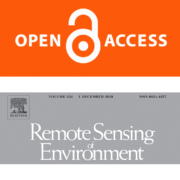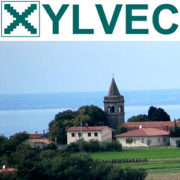Monitoring the incidence of Xylella fastidiosa infection in olive orchards using ground-based evaluations, airborne imaging spectroscopy and Sentinel-2 time series through 3-D radiative transfer modelling
A.Hornero a, R.Hernández-Clemente a, P.R.J.North a, P.S.A. Beck b, D.Boscia c, J.A.Navas-Cortes d, P.J.Zarco-Tejada bde
Affiliations
- a Department of Geography, Swansea University, SA2 8PP, Swansea, United Kingdom, bEuropean Commission (EC), Joint Research Centre (JRC), Directorate D-Sustainable Resources, Via E. Fermi 2749 – TP 261, 26a/043, I-21027, Ispra, VA, Italy, cCNR, Istituto per la Protezione Sostenibile delle Piante (IPSP), via Amendola, 122/D, I-70126, Bari, Italy, dInstituto de Agricultura Sostenible (IAS), Consejo Superior de Investigaciones Científicas (CSIC), Avenida Menéndez Pidal s/n, 14004, Córdoba, Spain, eSchool of Agriculture and Food, Faculty of Veterinary and Agricultural Sciences and Department of Infrastructure Engineering, Melbourne School of Engineering, University of Melbourne, Melbourne, Victoria, Australia
Abstract
Outbreaks of Xylella fastidiosa (Xf) in Europe generate considerable economic and environmental damage, and this plant pest continues to spread. Detecting and monitoring the spatio-temporal dynamics of the disease symptoms caused by Xf at a large scale is key to curtailing its expansion and mitigating its impacts. Here, we combined 3-D radiative transfer modelling (3D-RTM), which accounts for the seasonal background variations, with passive optical satellite data to assess the spatio-temporal dynamics of Xf infections in olive orchards. We developed a 3D-RTM approach to predict Xf infection incidence in olive orchards, integrating airborne hyperspectral imagery and freely available Sentinel-2 satellite data with radiative transfer modelling and field observations. Sentinel-2A time series data collected over a two-year period were used to assess the temporal trends in Xf-infected olive orchards in the Apulia region of southern Italy. Hyperspectral images spanning the same two-year period were used for validation, along with field surveys; their high resolution also enabled the extraction of soil spectrum variations required by the 3D-RTM to account for canopy background effect. Temporal changes were validated with more than 3000 trees from 16 orchards covering a range of disease severity (DS) and disease incidence (DI) levels. Among the wide range of structural and physiological vegetation indices evaluated from Sentinel-2 imagery, the temporal variation of the Atmospherically Resistant Vegetation Index (ARVI) and Optimized Soil-Adjusted Vegetation Index (OSAVI) showed superior performance for DS and DI estimation (r2VALUES>0.7, p < 0.001). When seasonal understory changes were accounted for using modelling methods, the error of DI prediction was reduced 3-fold. Thus, we conclude that the retrieval of DI through model inversion and Sentinel-2 imagery can form the basis for operational vegetation damage monitoring worldwide. Our study highlight the value of interpreting temporal variations in model retrievals to detect anomalies in vegetation health.
Acknowledgements
Data collection was partially supported by the European Union’s Horizon 2020 research and innovation programme through grant agreements POnTE (635646) and XF-ACTORS (727987).
Published on Remote Sensing of Environment on November 18, 2019








